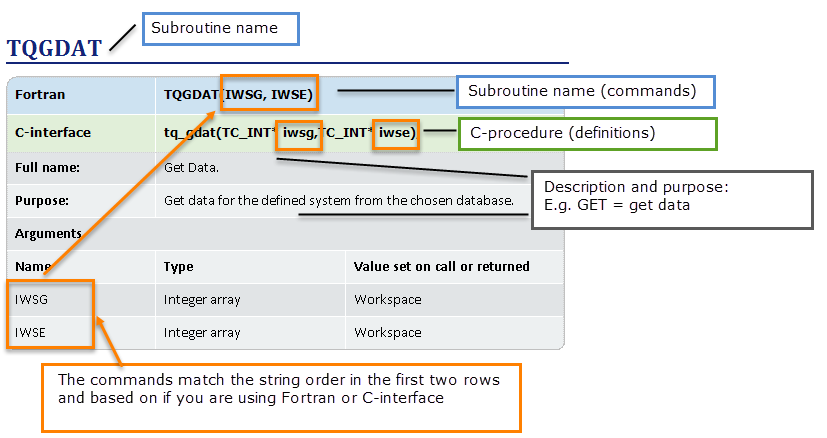TQDGYY
| Fortran |
TQDGYY(INDEXP, VARR1, VARR2, IWSG, IWSE) |
|
|---|---|---|
| C-interface |
tq_dgyy(TC_INT indexp,TC_FLOAT* varr1,TC_FLOAT* varr2,TC_INT* iwsg,TC_INT* iwse); |
|
|
Full name: |
Get Gibbs Energy and its 1st and 2nd Partial Derivative w.r.t. site-fractions. |
|
|
Purpose: |
Getting Gibbs energy and its 1st and 2nd partial derivatives with respect to site fractions for a phase if temperature, pressure, and site fractions have been given by other subroutines shown below in this Section. |
|
|
Comments: |
The returned value is in J/mole of formula unit. Remember this subroutine requires no action of setting condition and calculating equilibrium. It is for getting the Gibbs energy and its 1st and 2nd partial derivatives w.r.t site fractions for a single phase with given temperature, pressure and atomic arrangements no matter if the phase is stable, metastable, or unstable in competition with other phases. The application program should take care of the phase stability or phase equilibrium if it is of interest. |
|
|
Arguments |
||
|
Name |
Type |
Value set on call or returned |
|
INDEXP |
Integer |
Set to a phase index. |
|
VARR1 |
Double precision array |
Return values of Gibbs energy and its 1st partial derivatives w.r.t. site fractions in the index order of phase constituents. |
|
VARR2 |
Double precision array |
Return values of 2nd partial derivatives of Gibbs energy w.r.t. site fractions in the index order of IR: IR=J+I*(I-1)/2, I>=J; IR=I+J*(J-1)/2, I<J, where I and J are row and column indexes of phase constituents, respectively. |
|
IWSG |
Integer array |
Workspace |
|
IWSE |
Integer array |
Workspace |
Note the following conventions to distinguish between the programming languages.
- Routines starting with TQXXX, for example, TQGDAT, are in the Fortran interface
- Routines starting with tq_xxxx, for example tq_gdat, are in the C-interface.
- In Fortran, all routines are subroutines and do not return any values except where explicitly declared as functions.
- All the C procedures are declared as void and do not return any values except where explicitly otherwise declared.
An example of how to read the subroutine definitions.
